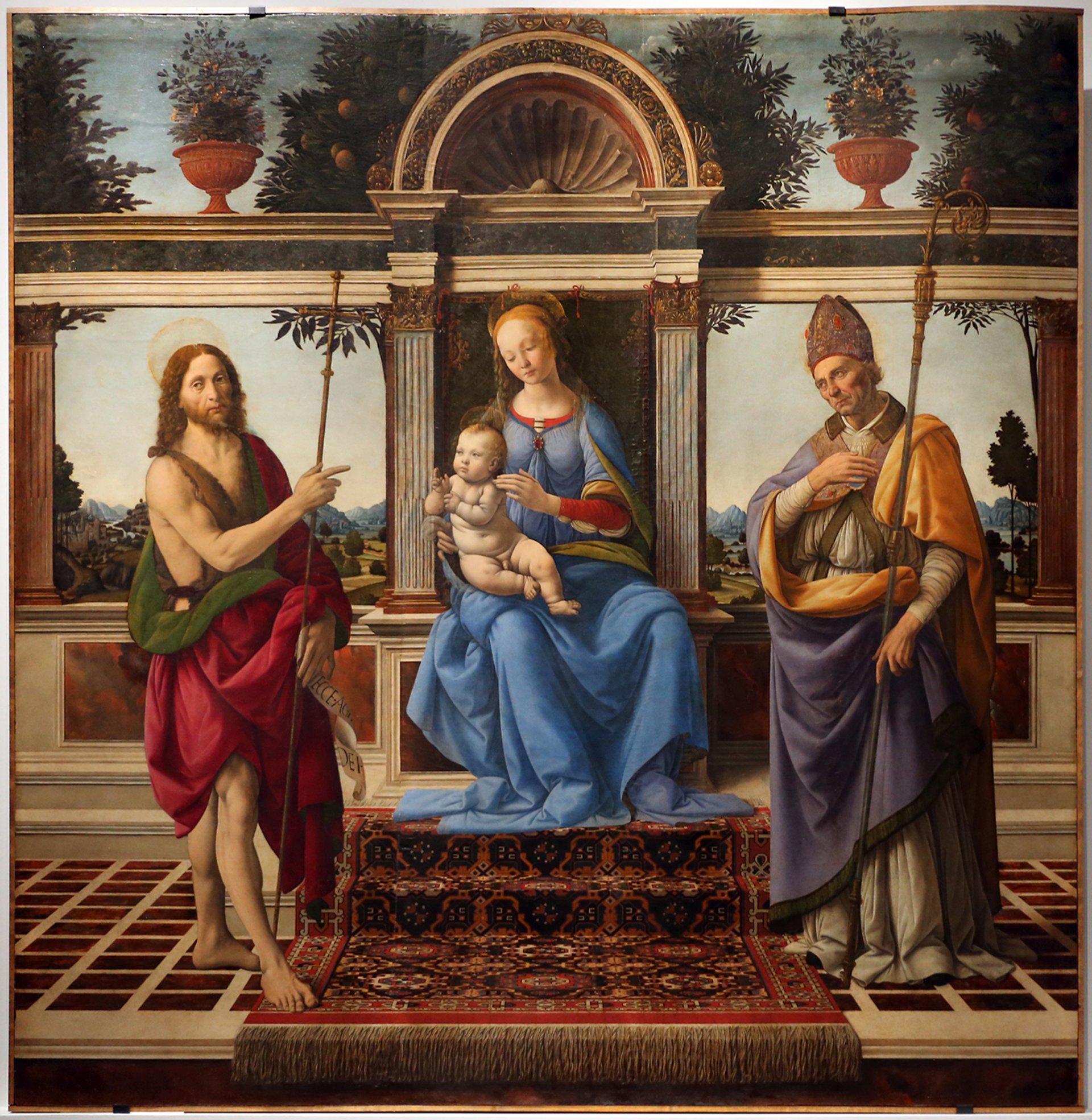Holy ground: why Persian carpets play an important symbolic role in the funeral of Pope Francis
A field of flowers surrounded Pope Francis’s simple wooden casket in St Peter’s Basilica this week. The intricate pattern, woven in shades of crimson, indigo, and orange, does not belong to an Italian artistic tradition. This elaborate carpet, the second used so far in the papal funeral proceedings, comes from northwest Iran.
The use of Persian carpets in papal funeral proceedings may seem like a surprising choice—that is, to those unaware of the long history of carpets from the Islamic world in Christian contexts. By placing Persian carpets beneath Pope Francis’s casket in his private chapel and then in St Peter’s, the Church is following a tradition spanning over six hundred years. How, one might wonder, did the visual language of carpets, neither Italian nor from a Christian tradition, come to signify holy ground in the most sanctified of Catholic rituals?
Niccolò di Buonaccorso, The Marriage of the Virgin (around 1380). The carpet demarcates the exalted zone within which the wedding of Mary and Joseph takes place National Gallery London
From the late 14th century on, carpets imported from Anatolia (and later the Levant, Egypt, and Iran) were the most precious floor coverings money could buy. Their special status is attested by their depiction in religious paintings, where such carpets often appear at the feet of the Virgin Mary or other important Christian figures. One of the earliest examples is The Marriage of the Virgin by Niccolò di Buonaccorso, painted in Siena around 1380 (and featured in the exhibition Siena: the rise of painting at the National Gallery in London). In it, a striking carpet with a design of confronted animals demarcates the exalted zone within which the wedding of Mary and Joseph takes place. A closely related carpet, now in the Metropolitan Museum of Art, was discovered in the 1990s, likely a product of the Ilkhanid Empire’s western domains.
Andrea del Verrocchio used an Anatolian carpet in a similar way for his depiction of the Virgin and Child flanked by John the Baptist and the bishop Donato de’ Medici (known as the Piazza Madonna), completed in 1486. The carpet, an Ottoman design of which many examples survive, creates a privileged space in which the Madonna reposes. The relative proximity of the two other figures to the Virgin and Child is implied by their positioning within the carpet. While St John steps his entire foot onto the carpet’s border, Donato de’ Medici encroaches on the space with only the edge of one toe.

Andrea del Verrocchio, Virgin and Child flanked by John the Baptist and the bishop Donato de’ Medici (1486)—known as the Piazza Madonna. St John (left) steps his entire foot onto the carpet’s border, while Bishop Donato de’ Medici encroaches on the space with only the edge of one toe Wikimedia Commons: Sailko
In the 16th century, carpets from Islamic lands reached Europe in growing numbers, arriving as trade goods, direct commissions, and sometimes, for the very finest examples, diplomatic gifts. Carpets from Ottoman lands dominated the trade in the 16th century. Safavid Iran and later Mughal India joined the market in the 17th. The use of carpets as diplomatic gifts continues to this day. In 2016, when the Iranian President Hassan Rouhani met with Pope Francis at the Vatican, he brought with him a small carpet woven in Qom as a gift for the pontiff.
The two carpets already seen in Francis’s funeral proceedings function in much the same way as the carpets in the paintings. They signal holy ground, a sanctified space with distinct borders that separate the pontiff from attendants and visitors around him. In the more intimate space of the private chapel, two members of the Swiss Guard stood flanking the casket on the carpet’s border, echoing the gesture of John the Baptist in Verrocchio’s Piazza Madonna. In St Peter’s, for the public viewing, the larger carpet’s borders and the sanctified zone they encompass have been reinforced by stanchions.
If the proceedings continue the traditions of recent papal funerals, another Persian or Turkish carpet will be spread in St Peter’s Square on Sunday beneath Pope Francis’s casket. Changes enacted by Francis in late 2024 eschew much of the pomp and circumstance of previous papal funerals, like the elevated biers used by his predecessors in St Peter’s Basilica and the three different coffins of cypress, lead, and oak. Considering this, the inclusion of the carpets holds particular significance. As Francis lies in a simple wooden casket placed low to the carpet, the image of holy ground comes vividly to the fore.




